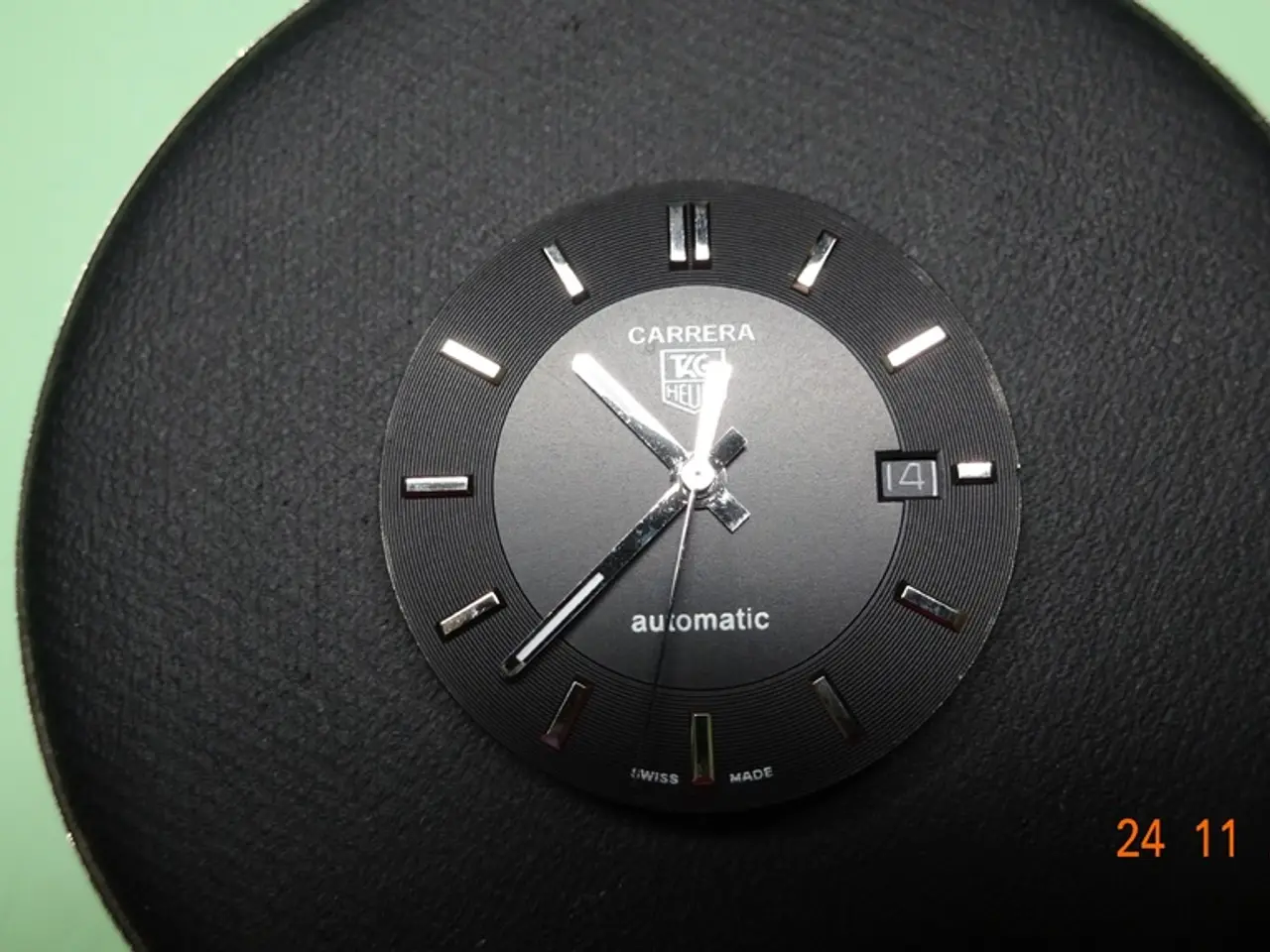Transformation of a Grand Clock: Weekly Tick Talk #36
In the world of antique and vintage clocks, appearances can be deceiving. A recent acquisition by the host of Tick-Talk Tuesday, a popular series focusing on letters and comments about clocks, serves as a prime example.
The clock, initially thought to be a weight-driven clock, turned out to be a spring-driven clock with fake weights. The discovery was made by carefully examining several key features.
Firstly, the weight appearance was a giveaway. Fake weights are often made of lighter materials or may be hollow. They might not be properly shaped or sized for the clock's mechanism, and they could lack the traditional ornamentation found on genuine weights.
Secondly, the weight attachment was a clue. Real weights are typically attached to chains that connect to internal clock mechanisms. If the "weights" are not attached to chains, or if they seem loosely connected, it could indicate they are fake.
Thirdly, the movement type was a significant factor. Spring-driven clocks use a coiled spring for power rather than weights. If you see a clock labeled as spring-driven but with weights, it might be mislabeled or fake.
Fourthly, the pendulum and gears were telling signs. Genuine mechanical clocks with weights often have a pendulum and a complex gear system. If these components seem altered, partially missing, or non-functional, it may indicate that the clock is not genuine or that the weights are fake.
Fifthly, signs of recent restoration or repainting were indicative of potential alterations. Clocks are sometimes modified to appear more authentic, but restoration can also cover up alterations to make fake weights appear genuine.
Lastly, testing the clock's functionality was crucial. If the clock does not function properly with the weights, this could indicate that they are fake or not connected properly.
The author, after identifying the deceptive spring-driven clock, decided to purchase it despite its misleading appearance. The clock was then sent for restoration, with the New Haven movement being serviced, and the case being refinished almost down to the bare wood. The seller was pleasantly surprised by the condition of the refurbished clock when a photo was sent to them.
Tick-Talk Tuesday #11 and #12 focus on clocks from Cuba and related concerns, as well as Arthur Pequegnat Nelson hall clock issues and challenges. Tick-Talk Tuesday #38 discusses Swigart replacement dial issues and advice for particular clock concerns. The series also provides advice on specific clock concerns and general comments about clocks.
Subscribing to the author's Antique and Vintage Clocks blog will keep you updated on the latest posts about clocks. The author consults with clock circles for difficult questions in Tick-Talk Tuesday, ensuring that the advice given is accurate and reliable.
The refurbished clock now keeps good time, making the author's effort in uncovering its deception worthwhile. The lesson learned is to always carefully examine clocks before making a purchase and to seek advice when in doubt. After all, the world of antique and vintage clocks is a fascinating one, filled with hidden secrets and beautiful timepieces.
Vintage clocks, much like fashion-and-beauty and home-and-garden items, can hold hidden secrets. Careful examination of key features, such as weight appearance, weight attachment, movement type, pendulum and gears, signs of restoration or repainting, and testing the clock's functionality, can reveal potential alterations and deception. While the author's refurbished clock now keeps good time, the lesson remains: be diligent when purchasing antique and vintage clocks.








